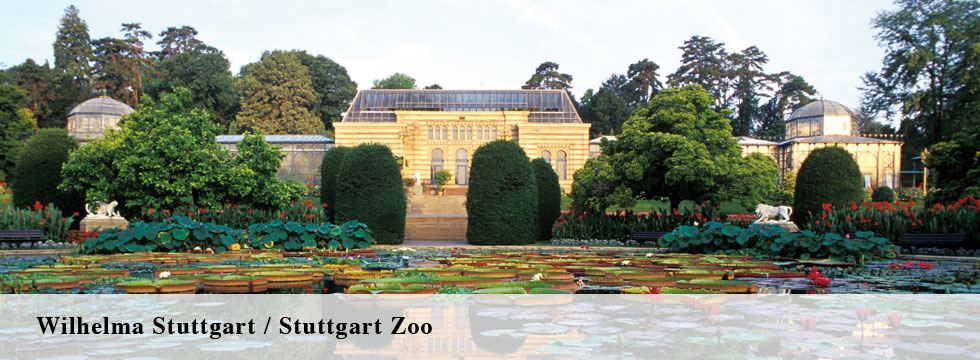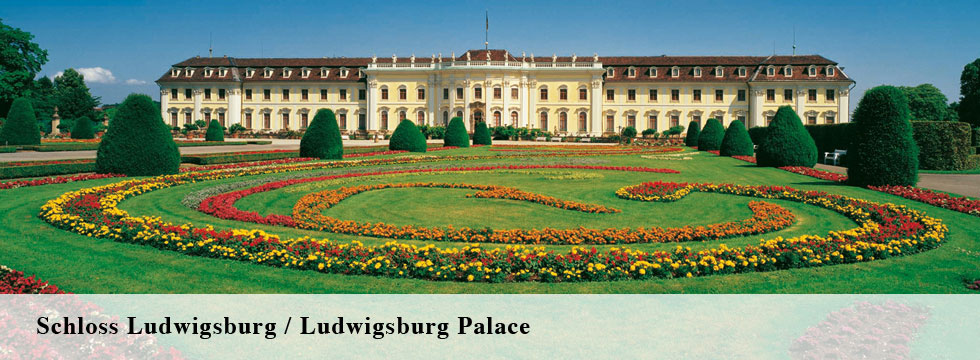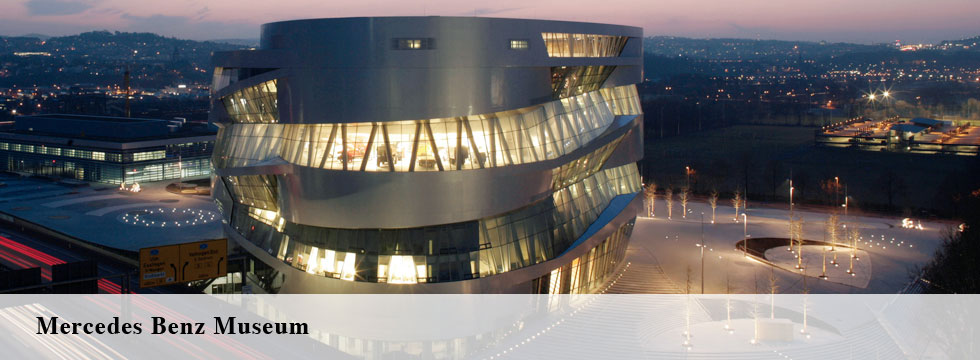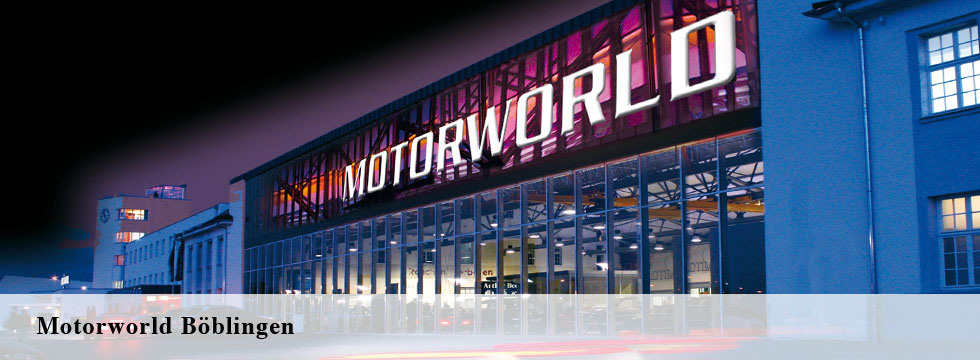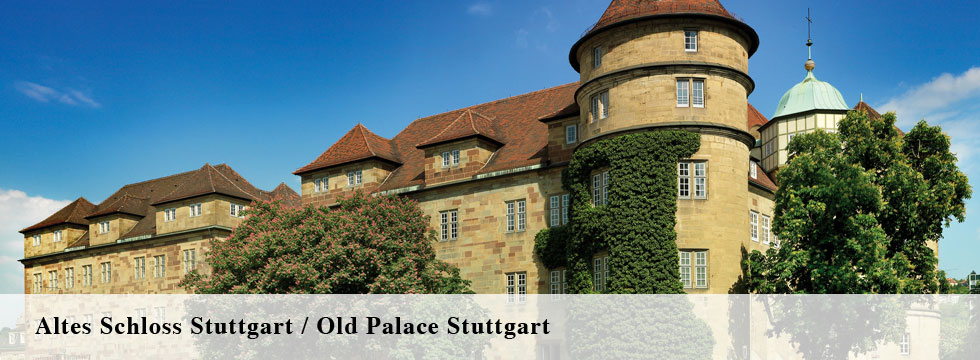LOCAL HIGHLIGHTS
BASICS
The Stuttgart Region
In the Stuttgart Region nature goes hand in hand with technology, and tradition with innovation. Its architecture ranges from Baroque to ultramodern. It spans the diversity of the pulsating economic metropolis and a wealth of culture on the highest level. And all of this is to be found amidst idyllic, topographically appealing scenery.
Tourist Information i-Punkt
The "i-Punkt" Tourist Information at Königstraße 1a and the Tourist Information at Stuttgart Airport are the No. 1 addresses, both for Stuttgart's inhabitants and for international visitors. The “i-Punkt” team has tips and suggestions galore – and in all the most important languages!
Services offered:
• Tourist information on places of interest
• Individual and multilingual visitor assistance
• Tickets for city walks and guided tours
• Hotel accommodation service
• STUTTCARD Discovery Tickets
• Departure and arrival point for the STUTTGART Citytour
• Advance ticket sales, tips for events
• Stuttgart souvenirs
• Transport advisory service and information on bus and rail connections in and around Stuttgart. DB (railway) ticket sales at the Tourist Information at Stuttgart Airport.
STUTTGART Citytour
Take your seats please! The STUTTGART Citytour is a new tourism-flagship for Stuttgart: red, open-top Mercedes-Benz double-deckers invite guests to explore Stuttgart. With the hop-on/hop-off system and ten attractive stopping points, visitors are able to discover the city individually. With Mercedes-Benz the bus has great symbolic significance, both for Stuttgart and for the tourism industry.
Stopping points:
1) i-punkt/Turmforum
2) Schlossplatz
3) Schweinemuseum
4) Mercedes-Benz Museum
5) Gottlieb-Daimler-Gedächtnisstätte / Kursaal
6) Wilhelma / Neckar-Käpt´n
7) Weingenuss / Römer
8) Weinwanderung
9) Killesberg / Weissenhofmuseum
10) Linden-Museum
StuttCard
The new StuttCard is available from 1st January 2015 onwards. The handy credit card size fits into every wallet, so it's the ideal companion for a city trip to Stuttgart.
The StuttCard gives you free admission and reductions on the regular prices of more than 50 partners in the Stuttgart Region.
24h 48h 72h
Without free VVS travel 15,00 20,00 25,00
With VVS travel 25,00 35,00 45,00
Discovery Tours 2015
Whether you prefer a city walk or a Segway trip, a "Stäffeles" (steps) tour or a tour of the city in an open-top, double-decker bus – the Stuttgart-Marketing GmbH invites tourists to get to know Stuttgart from a variety of angles with its five English-speaking "Discovery Tours 2015".
Messe Stuttgart Trade Fair Centre
Around 20.600 exhibitors, 1.27 million visitors and 67 events a year: This is the latest success status of Messe Stuttgart. No matter what kind of event is planned or how complex the requirements are, the Messe Stuttgart, with its 105,200 sq.m. of exhibition space and ground of 40,000 sq.m, offers a wide range of options and always the fitting location.
INVENTIVE
Motorworld
The Motorworld in the unique ambience of the historic listed building at the former Böblingen/Sindelfingen airfield offers a stylish setting for all kinds of activities to do with vintage vehicles, collector's items, car maintenance and accessories. The Motorworld offers not only vehicle restoration facilities and salesrooms, but also excellent catering, allowing visitors (no admission charge) to enjoy the sophisticated combination of a classic car museum.
Porsche-Museum
The Porsche-Museum opened in 2009: not just anywhere, but right on Porscheplatz. Since 1950 this has been the production site of the sports cars with Stuttgart's horse rampant emblem on their bonnets. There are several special exhibitions a year, but even without them, the museum presents a constantly changing picture.
Mercedes-Benz Museum
The Mercedes-Benz Museum, which opened in 2006, is Stuttgart's most visited museum, with about 700.000 visitors annually. In its interior, on an area of
16 500 sq.m, 160 vehicles and over 1500 exhibits are on display. The Mercedes-Benz Museum is the only one in the world to document the more than 125-year old history of the automobile industry from day one down to the present day.
Daimler’s Birthplace
It all began in a pretty timbered house in Schorndorf. This is where Gottlieb Daimler, a baker's son, was born in the year 1834. Together with Wilhelm Maybach Gottlieb Daimler developed his ideas, all milestones of technology. Today Daimler's Birthplace, later acquired and restored by the Daimler-Benz AG, is a museum and conference centre.
Gottlieb Daimler Memorial
His ideas, all of them milestones of technology, were realised in cooperation with Wilhelm Maybach in his workshop – a greenhouse in Bad Cannstatt. This workshop in the Taubenheimstrasse is today the site of the Gottlieb Daimler Memorial. Models of the engines and the tools they used bring to life the work and ideas of these two inventors.
Stuttgart Television Tower
The Stuttgart Television Tower is the forerunner of all television towers and is regarded as an aesthetic and architectural masterpiece. Built in 1956, it is today one of the city's main landmarks. Since it was built, Stuttgart's Television Tower has been imitated all over the world.
SOPHISTICATED
Palace Square
Stuttgart's Palace Square is the vibrant heart of the city, but at the same time it's a place to linger, within easy walking distance of many of the city's attractions. Palace Square is therefore Stuttgart's hub and an integral part of any stroll through town. Stuttgart's Palace Square is a place both to celebrate and relax.
The Stuttgart Museum of Art
The Stuttgart Museum of Art is a work of art in its own right. At night the glass cube sets the stone core of its interior aglow, also bathing Palace Square in its radiance. Much of its 5000 sq. m exhibition area is located in a disused system of tunnels. The Stuttgart Museum of Art's collections comprise over 15 000 works dating from the late 18th century up to the present day.
The Stuttgart State Gallery
The Stuttgart State Gallery is one of Germany's foremost art museums, presenting works of art from eight centuries on an exhibition area of 9000 square metres. The colour concept and guidance system are geared to the themes, allowing visitors to view the works of art in the order of their art-historical development. The permanent exhibition represents works of Late Medieval German, Italian and Netherlandish art as well as Swabian Classicism.
The Weissenhof Estate and the Le Corbusier House
The housing estate was designed for the 1927 Werkbund exhibition “Die Wohnung” by 17 architects from five European countries, including Walter Gropius, Mies van der Rohe, Le Corbusier and Hans Scharoun. The object of the exhibition was to present concepts for “Neues Wohnen” (New Living) from the point of view of economy, functionality, construction, technical fittings and furnishings.
The Württemberg State Museum
The Württemberg State Museum is the largest historico-cultural museum in Baden-Württemberg. Its collections have been on display since 1948 in Stuttgart's Old Palace, the former residence of the dukes of Württemberg. In the children's museum “Junges Schloss” (“Young Palace”), children between four and ten years of age can learn about local culture and history in a child-oriented way in alternating exhibitions.
The Linden-Museum Stuttgart
The Linden Museum is one of Europe's leading museums of ethnology, giving fascinating insights into the everyday lives, arts and civilization history of non-European people. The seven large permanent sections on North and South America, Oceania, Africa, the Orient, and Southern and Eastern Asia are complemented by attractive special exhibitions.
Stuttgart State Natural History Museum
Stuttgart State Natural History Museum may not be as old as its exhibits; some of which date back to the 16th century, but the museum's collections have their origins in the former Chamber of Curiosities of the dukes of Württemberg. In 1791 the natural history collections – today's State Museum of Natural History – became an institution in their own right.
Pig Museum
Since 2010 Stuttgart has gained a new "swinish" attraction – the Pig Museum in the former slaughterhouse. From lucky pig mascots to piggy banks and cuddly toys – from mass-produced kitsch and articles of daily use to valuable antiques and collector's items: over 45 000 exhibits from all over the world tell their porcine stories in the exhibition's 25 theme rooms.
Stuttgart State Theatres
One of the cultural showpieces of Baden-Württemberg’s state capital of Stuttgart is the Staatstheater Stuttgart – Stuttgart State Theatres – Europe’s largest triple-branch theatre. In opera, ballet and theatre this traditional yet innovative cultural institution sets new standards each season with top-calibre performances which time and again enthral and impress both international audiences and opera and theatre critics.
Stuttgart’s Public Library
With its height of 40 metres, the public library (2011) towers over Mailänder Platz. To Eun Young Yi, its Korean architect, the monolith, whose facade incorporates countless glass blocks, is a polished jewel. Grey and unpretentious by day, the library cube glows at night in an iridescent blue. From the outside the building seems closed off, but a new world opens up on entering: a 14-metre-high, empty hall, lit only by one overhead window.
Residential Palace of Ludwigsburg
With three courtyards and 452 rooms in 18 buildings, set in a park 32 hectares in size, it is one of the largest surviving Baroque palaces in Europe and was formerly the royal residence of the dukes and kings of Württemberg. The foundation stone was laid in 1704 by Duke Eberhard Ludwig of Württemberg – originally for a hunting palace, but by 1733 it had become a Baroque residence.
ENTICING
Culinary Stuttgart
The gourmet heaven over Stuttgart is a bright one: Baden-Württemberg's state capital boasts no fewer than eight starred restaurants. In addition, fifteen gourmet restaurants in the Stuttgart Region have received the Guide Michelin's culinary accolade. But those who enjoy more down-to-earth fare will find plenty of choice here, too. As far as food is concerned, the state capital has two sides to it, both equally appreciated by its inhabitants. Exquisite and highly decorated on the one hand, Swabian and down-to-earth on the other. Lentils with Spätzle (Swabian-style noodles) are the Swabian national dish. Specialities such as Gaisburger Marsch (a hotpot with potatoes and noodles), Ofenschlupfer (similar to bread pudding) and Maultaschen (filled pasta) demonstrate Swabia's legendary frugality at its best.
Stuttgart’s Market Hall
Reputed to be one of Germany's finest market halls, Stuttgart Market Hall was built in Jugendstil design in 1914 – in 2014 it celebrated its centenary jubilee. This impressive listed building is a veritable paradise, full of epicurean delights and stylish and attractive household furnishings and garden equipment. On the ground floor, shopkeepers present their artistically and appetizingly displayed produce at a total of 43 stalls. The great variety of goods is guaranteed by the many different nationalities of the stallholders such as from Italy, Greece, Hungary, Iran, Turkey, France or Argentina.
Stuttgart City of Wine
Winegrowing has a long tradition in the Stuttgart Region. As far back as the 3rd century AD, Roman emperors had vineyards planted all over the country. By the 16th century Stuttgart was already one of the largest wine-growing communities in the Holy Roman Empire of the German Nation. The main wines grown in the Stuttgart Region today are the red varieties Lemberger, Spätburgunder and Trollinger. A typical feature of the wine region of Stuttgart is its "Besenwirtschaften", or "Broom Taverns": temporary wine taverns that only open for twelve weeks of the year. The name derives from the broom that hangs at the door to show they are open for business.
Stuttgart Museum of Viniculture
Stuttgart's Museum of Viniculture has been in existence since 1979. In the historical ambience of the Old Winepress in the district of Uhlbach, the history of wine growing is presented in a modern, state-of-the-art exhibition. Stuttgart is a city with a long tradition of wine growing. And for over 35 years now Stuttgart's Museum of Viniculture has been making this history come alive. Wine growing has changed over the years. Stuttgart's vintners have made progress, and so has the quality of Württemberg's wines. And these changes are reflected in the Museum of Viniculture – both in appearance and in content.
Stuttgart Summer Festival
Stroll around, sample delicious food, relax, dance – this elegant open-air festival is held annually at the beginning of August (6th August until 9th August 2015) on the main Palace Square and in the Palace Gardens around the lake in front of the State Theatre. The white pavilions, countless fairy lights and lanterns, the beautiful backdrop of the New Palace, a wide choice of culinary delights and a range of musical performances to suit every taste give this chic summer festival its incomparable flair.
Stuttgart Wine Village
From 26th August until 6th September 2015 more than 500 exquisite wines from Württemberg and Baden can be sampled in 125 tastefully decorated wine arbours.
To accompany them, Stuttgart’s chefs serve Swabian specialities such as “Maultaschen” (filled pasta squares), “Käsepätzle” (noodles with cheese) and “Schupfnudeln” (potato noodles) with sauerkraut, to name but a few. It has become a tradition at the Stuttgart wine festival to stroll from arbor to arbor, with a quarter-litre glass, which one has lent at the wine festival or brought along from home, and to stop and visit as one pleases.
Stuttgart Beer Festival
The Stuttgart Beer Festival, which originated in 1818 as a harvest thanksgiving celebration, has become one of the world’s largest public festivals with a host of fairground rides and frequent new attractions centred round its emblem, a 26 metre high column of fruit. The white water flume, the Ferris wheel and the colourful market stalls delight millions of visitors 17 days long, from 25th September until 11th October 2015. In the huge marquees of the Stuttgart breweries, each of which seats up to 5000 guests, in the beer tents of the regional brewers and the beer gardens.
Christmas Markets in the Stuttgart Region
With its 287 stalls and a tradition of more than 300 years, the Stuttgart Christmas Market is one of the loveliest in Germany and one of the oldest and largest of its kind in Europe. It was first documented in 1692, though its roots go back much further. The stalls stretch from the New Palace and the Königsbau, across Schiller Square with the Old Palace and the Collegiate Church, to the Marketplace. Ludwigsburg Baroque Christmas Market, with its illuminated arches and angels has more than 175 Christmas stalls. At Esslingen's Medieval and Christmas Market merchants in historical costumes peddle their wares just as they did hundreds of years ago.
Musicals in Stuttgart
For more than 20 years the Stage Apollo Theatre and the Stage Palladium Theatre, located inside the SI-Centrum, have been showing the world’s most successful musicals and shows. The famous Broadway musical "Chicago" takes the audience on a journey of love, lies and vanity (until autumn 2015). From November on, ROCKY enters the musical stage with speed, dynamics and touching moments that go straight to the heart. At the Apollo Theatre, Disney’s Musical Tarzan tells the story of a young man searching for his roots while finding a new love.
The Mineral Spas
The Stuttgart district of Bad Cannstatt is a tingly, bubbly place. Its 19 springs, 13 of which are state-recognised for their curative properties, produce some 44 million litres of mineral water daily. Greater mineral water resources are to be found in Europe only in Budapest. This precious natural asset is utilised in many different ways at the three spas: DAS LEUZE Mineralbad, MineralBad Cannstatt and Mineral-Bad Berg. The carbonated water is used in the swimming pools, for the various therapeutic facilities and in the public drinking fountains.
Wilhelma Zoological and Botanical Gardens
The combination of historical ambience, tropical plants and animals make a visit to the Wilhelma a very special experience, no matter what the time of year. Germany's only zoological and botanical gardens reflect 160 years of history. The Wilhelma has some 9000 animals from 1000 different species, making it one of the most diverse zoos in the world, and one which represents a cross-section from every climatic zone on earth. There's also a valuable collection of plants, comprising some 6000 species.
Sparkling Wine Producer Kessler – Kessler Karree 18
In the heart of the beautiful old town of Esslingen, Kessler has been producing sparkling wine for more than 180 years in an imposing half-timbered building. The Kessler Karree 18 is one of the oldest sparkling wine producers in Germany. A timeless, modern enterprise which not only stands for tradition, but also for lifestyle. To date, Kessler is an independent private sparkling wine producer, who focuses on the production of quality sparkling wine.
Sporting Events in the Stuttgart Region
Crazy about sports? Baden-Württemberg’s capital offers a wide range of activities and festivities. The spring starts with tennis at the Porsche Tennis Grand Prix. Summer continues with the Mercedes Cup on the field of TC Weißenhof. adidas ROCKSTARS takes place in autumn and impresses with top athletes, listed on the Boulder-world ranking. In winter, the STUTTGART GERMAN MASTERS presents five days of equestrian events.
Weitere Information erhalten Sie unter:
www.stuttgart-tourist.de
*Text- und Bildquelle: Stuttgart-Marketing GmbH
JOURNEY
ADDRESS
Hotel-Betriebs-GmbH
ERIKSON Hotel
Hanns-Martin-Schleyer-Straße 8
71063 Sindelfingen GERMANY
Tel.: +49 (0)7031/935-0
Fax: +49 (0)7031/935-555
The ERIKSON Hotel is conveniently situated for public transport. There is an immediate connection to the Stuttgart airport and the Autobahnkreuz Stuttgart (intersection). The hotel’s central location in the middle of the industrial region Stuttgart provides short distances. The Schwarzwald (Black Forest), a nearby holiday area, is an ideal goal for an outing at the weekend, or even a short holiday trip.
YOU CAN REACH US AS FOLLOWS
Coming by car from the A8 Karlsruhe/München (Munich), you look for the slip road on to the A81 in the direction of Singen at the Stuttgarter Kreuz (intersection). Leave the highway at the exit Sindelfingen-Ost (number 21), or Böblingen-Sindelfingen (number 23). Follow the green signposts ‘Hotel-Route’ in the direction of Calw (≈ 3km) up to the second AGIP petrol station that lies on your right. The next building in line is the ERIKSON Hotel.
At the Stuttgart main train station (Hauptbahnhof), you take the subway (S-Bahn) S1 in the direction of Herrenberg (≈ 20 minutes). Get off at Böblingen train station. Drive with a taxi or catch a bus at the central bus station nearby (lines 701, 709, 757) to get to our hotel. If you catch a bus, head for Sindelfingen central bus station (Busbahnhof ZOB). Otherwise you can change directly at the Böblingen train station to the subway S60 in the direction to Maichingen Renningen (platform 5). At the Station in Sindelfingen you´ll leave the subway. Our Hotel can be found directly on the opposite of the street on the right side (about 100m foot-away).
At the airport Stuttgart-Echterdingen, you take the subway (S-Bahn) S2 or S3. You change in Rohr to the S1 in the direction of Herrenberg. Leave the subway at Böblingen train station. Drive with a taxi or catch a bus at the central bus station nearby (lines 701, 709, 757) to get to our hotel. If you catch a bus, head for Sindelfingen central bus station (Busbahnhof ZOB). At the Böblinger station you can also change to the S-Bahn S60 in the direction of Maichingen Renningen (Gleis5). Get off at Sindelfingen train station. Our hotel is right across the street on the right (100m walk).
PARKING
For the hotel guests of the Erikson 40 parking spaces are available in our underground car park. The daily fee for this is 14,00 EUR. Our restaurant visitors park for free. For further questions please contact our friendly staff at the reception.
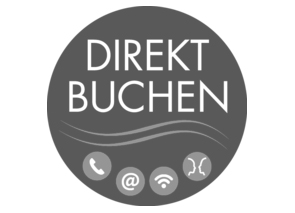


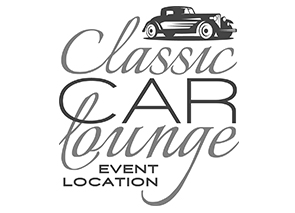
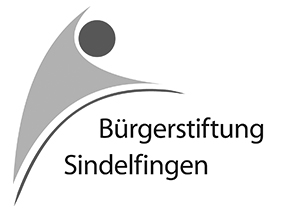
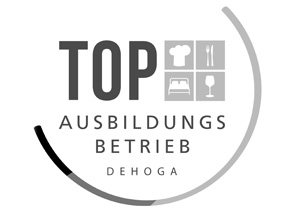
Navigation
SustainabilityRoomsRestaurantConferenceBanquetsCateringJobsContactBookingFAQsImprintPrivacy policyTags
Conference PackagesMenuEventsWork & TrainingCatering ServiceLocal attractionsLinks
Taxi headquarterClassic Car LoungeContact
Erikson Hotel
Hanns-Martin-Schleyer-Str. 8
D-71063 Sindelfingen
Tel.: +49 (0)7031-9350
Follow us
FacebookInstagramOpening hours
Reception & Hotel bar
24 hours for our Hotel guests
Restaurant & Kramer's Stüble
Closed Monday to Tuesday
Kitchen times Wednesday to Sunday
11:30 a.m. - 2:00 p.m.
6:00 p.m. - 09:30 p.m.
Room service (for a fee):
Monday – Friday 5:30 a.m. – 10:00 p.m.
Saturday – Sunday 7:00 a.m. – 10:00 p.m.
© Erikson Hotel Sindelfingen 2024

